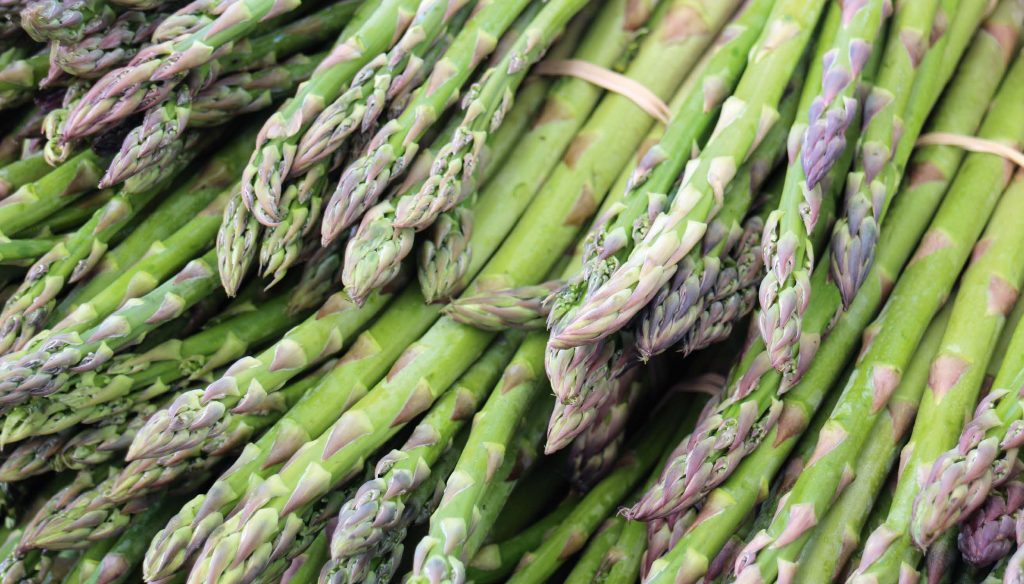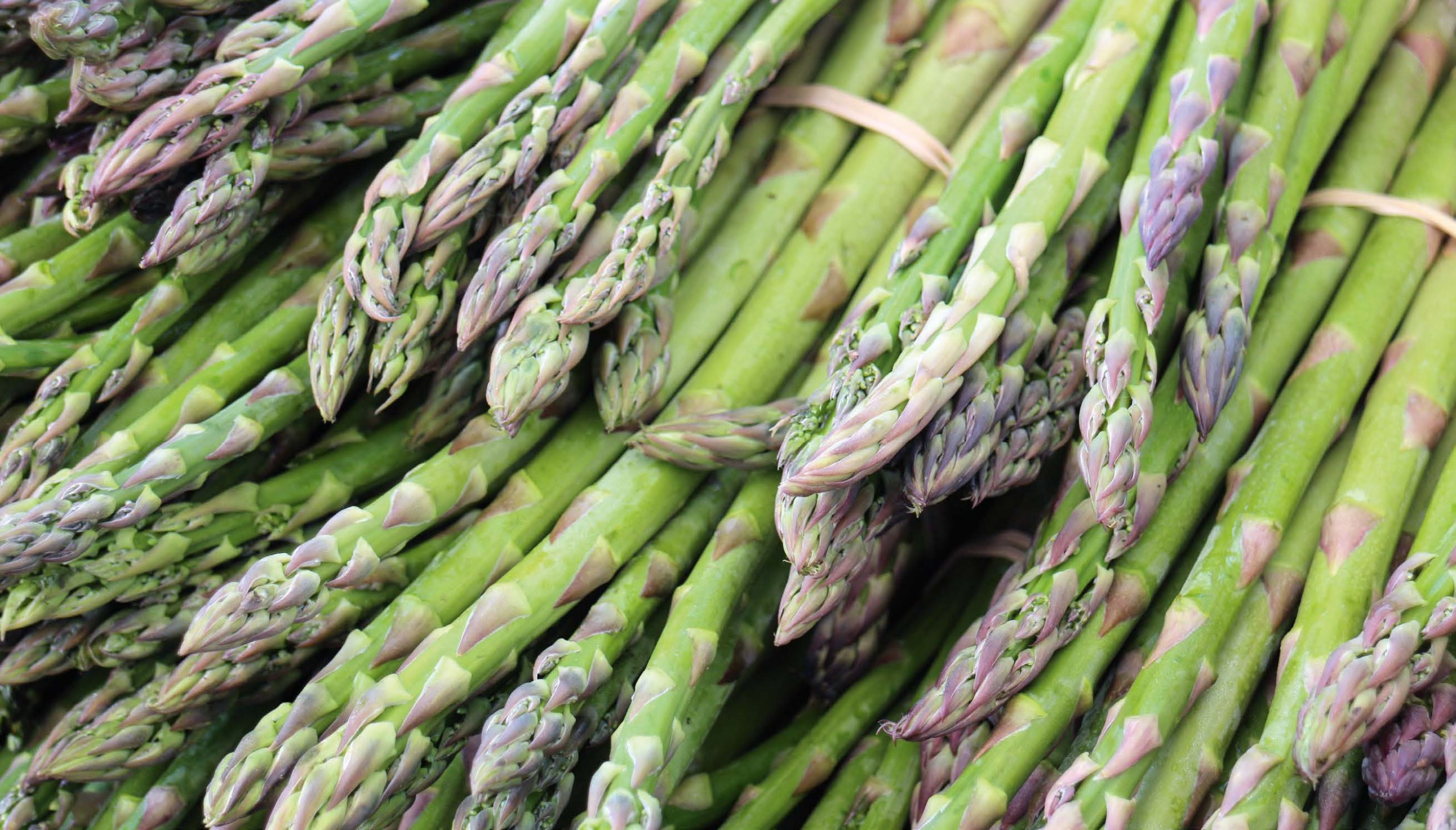Understanding asparagus tip breakdown
There’s year-round demand for fresh green asparagus in the UK, however, the UK asparagus season is short and averages just 5,300 tons. What’s more, the local spears suffer from a relatively short shelf-life resulting in substantial waste at times of peak production, when it is difficult to manage asparagus yield and consumer demand. To meet the shortfall in supply, nearly 12,000 tons were imported by the UK in 2022, much coming by air freight from Peru and Mexico. Being able to prolong storage-life while maintaining the quality of UK-grown spears would have benefits including reducing food loss and the carbon footprint of imports. Currently, maintaining asparagus quality using cold storage alone is limited to one week, after which the spears have about a seven-day shelf-life in retail outlets. One of the factors limiting a longer life in cold storage is the onset of the postharvest physiological disorder tip breakdown. Also (erroneously) known as tip rot, this disorder occurs only sporadically during the shelf-life of chilled or cold stored spears; and often the first symptom is an unpleasant aroma. Unfortunately, this ‘off’ smell usually ends up causing the whole batch of asparagus to be discarded even if only some spears are affected by tip breakdown. While microbes appear to be off the hook, the underlying causes of tip breakdown remain to be discovered.
What is already known about tip breakdown
Initial investigation into tip breakdown suggests its origin is physiological (1), not pathological, developing in the rapidly dividing cells of the spear tip (2) during periods of hot weather. (High levels of tip breakdown across the UK in 2018 coincided with an unseasonably warm harvest season.) Fast growth and reduced levels of non-structural carbohydrates have also been linked to a higher incidence of tip breakdown (3), and it has been noted that warm adapted asparagus genotypes, such as ‘Jaleo’, have lower susceptibility than cold adapted ones, such as ‘Gijnlim’. Nevertheless, despite previous research, the underlying causes of tip breakdown have not yet been fully elucidated. Since 2020, researchers* in the UK have thus been on the hunt for the true culprits causing this disorder. Hailing from Cranfield University (Plant Science Laboratory and Environmental Analytical Facility) and Cardiff University (School of Biosciences), they are being led on this project by JGHC Ltd, which is linked to Cobrey Farms, where 40% of the UK’s asparagus is grown. Once the factors responsible for tip breakdown are identified, they hope to develop a decision support tool to identify pre-symptomatic tip breakdown spears.
‘Early California’ and ‘Aspalim’ spears under the microscope
Does fast growth or a slow rate of sugar transport play a key role in tip breakdown? To test these theories, the researchers chose two asparagus cultivars with low and high susceptibility to tip breakdown, the warm acclimated ‘Early California’ and cold acclimated ‘Aspalim’, respectively, and grew them under a cold controlled temperature regime (18/8°C, day/night) as well as a warm one (28/14°C). Harvested spears were cut to a length of 16 cm, packaged into shelf-life trays, wrapped in commercial film and stored at 7°C to assess the development of tip breakdown. Sampling took place on days 14 and 21. The top 4 cm of each spear sampled was snap frozen and underwent biochemical analysis of non-structural carbohydrates and plant growth regulators (PGRs), followed by statistical assessment.
More susceptible: spears that grow fast under hot conditions
‘Early California’ seemed to grow at a slower rate than ‘Aspalim’, though the growth rate for both was significantly lower under the cold compared to the warm conditions. What’s more, tip breakdown was not observed in any of the spears grown under cold conditions. Under the warm regime, however, the problem appeared in both and although overall the incidence was not that high, it was twice as much for ‘Aspalim’ than for ‘Early California’. Such results are in line with work by other researchers (4) who found that tip breakdown occurred under warm growing conditions.
Spears with tip breakdown had less sugar
As for sugar content, the UK researchers found that fructose concentrations were lower in spears with tip breakdown than in healthy spears. Further experiments will be needed to see whether the decreasing trend in sugar content towards the end of the harvest increases predisposition to tip breakdown, they said. Also of note is that the ‘Aspalim’ spears grown under cold conditions had an overall higher sugar content (fructose and glucose) at harvest than the warm-grown spears. These results are in line with previous studies where asparagus grown in the field under cooler, more favourable growing conditions resulted in spears with higher sugar content and better quality during storage (5), they said.
Tip breakdown and postharvest senescence are likely to be different processes
In prior studies (6), higher levels of the plant growth regulator abscisic acid (ABA) in asparagus tips was associated with lower quality spears. However, in the current research, after 14 days of cold storage, it was healthy spears, not those with tip breakdown, that had significantly higher concentrations of ABA. The researchers said it could therefore be hypothesised that tip breakdown disorder and postharvest senescence in asparagus are two independent processes which may be governed by different molecular pathways. A more detailed hormonal study, quantifying cytokinins and auxins, plus a transcriptomic analysis, would aid in fully explaining what role, if any, that plant growth regulators have in the incidence and development of postharvest tip breakdown in asparagus spears, they said.
Studying tip breakdown at molecular and cellular level
Does spear cell size have something to do with tip breakdown? Or could changes in gene expression have a key role? To explore these hypotheses, the researchers studied the cellular mechanisms of tip breakdown. Once more, ‘Aspalim’ and ‘Early California’ cultivars were chosen and were grown under cooler and warmer controlled conditions as described above. Harvested spears were stored at 7oC in the dark for 14 days and tip breakdown was assessed visually.
Cellular analysis appears to rule out cell size as a culprit
Among the reasons to suspect a role for cell size in tip breakdown is the link to faster spear growth. This led to the hypothesis that this may result in larger, weaker cells that are more susceptible to postharvest tip breakdown. However, an examination of cell sizes for ‘Aspalim’ (susceptible to tip breakdown) and ‘Early California’ (a variety in which it very rarely occurs) – at both higher and lower growth temperatures – did not reveal any significant differences in cell size.
RNA analysis a potent tool for studying gene expression, metabolic activity
RNA sequencing (RNAseq) was used to investigate any changes in the genes being switched on and off in asparagus spears affected by tip breakdown. Also known as transcriptome sequencing, RNAseq is a powerful method for revealing changes in metabolic pathways that may be involved in the development of postharvest disorders. The publication of the asparagus genome has greatly facilitated this approach.
On analysing spears after 14 days of shelf-life, many genes were found to be upregulated in those showing tip breakdown compared to healthy spears that had been grown and stored under the same conditions. The authors said that this was “perhaps surprising” and suggests the process of tip breakdown is an active, not passive one. This might indicate that tip breakdown is not due to necrotic cell death (such as excessive heat might cause), although further work is needed to confirm this. Preliminary analysis of the types of genes that change in expression during tip breakdown revealed a high proportion of genes involved in reprogramming activities in the cell and may therefore be involved in regulating the progression of tip breakdown. Several metabolism-related genes were also altered in expression, including transferases, oxidoreductases and O-methyltransferases. “Understanding the role of these genes may help us identify the mechanisms controlling the tip breakdown. This could lead to the discovery of pre- or postharvest treatments or provide breeding targets to improve resilience to tip breakdown in more susceptible asparagus varieties,” the researchers said.
*Principal Investigators: John Chinn (JGHC Ltd – overall lead), Dr MariCarmem Alamar (Cranfield University), Prof Hilary Rogers (Cardiff University)
1. Beever et al., 1985; Carpenter et al., 1996
2. Jermyn et al., 1999
3. Lill et al., 1994; Hurst et al., 1996; Lill et al., 1996; Lill and Borst, 2001
4. Lill et al. 1996
5. Anastasiadi et al., 2020 doi: 10.1016/j.postharvbio.2019.111017
6. Anastasiadi et al., 2022 doi: 10.1016/j.postharvbio.2022.111892
7. Lallu et al., 2000 doi: 10.1080/01140671.2000.9514119
Find out more:
https://www.cranfield.ac.uk/people/dr-m-carmen-alamar-498015
























